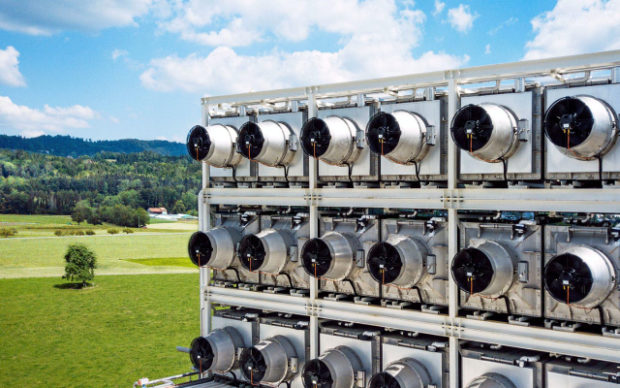
Climeworks machinery in Hinwil, Switzerland. Image: Climeworks via AFP Relaxnews.
For years, the Swiss company Climeworks has been experimenting with a system to purify air by adsorbing atmospheric carbon dioxide, which can then be stored or recycled.
Having first built an initial plant in Hinwil, Switzerland, the company is now building the world’s largest carbon recovery and storage facility in Iceland, which will collect an estimated 4,000 tonnes of CO2 per year.
But how does it work? The company has developed a system of filters that use a specially developed adsorbent to bind CO2. Once these are full, they are heated to 100 degrees to produce concentrated gas, which can then be stored or recycled.
Naturally, all of this machinery relies on green energy or, in the case of the Icelandic project, waste heat from a geothermal facility to power this adsorption-desorption process.
Once it has been collected, the CO2 can be sequestered underground and sold to companies as a carbon credit or alternatively converted into carbonic acid, which is used by the beverage industry to make sodas.
In the summer of 2020, Climeworks raised an impressive 70 million euros (approx. $82.5 million or P4 billion) with its latest call for funding.
It has also entered into partnerships with automobile manufacturer Audi and the airline Lufthansa to develop non-polluting synthetic fuels. In the long term, Climeworks hopes to be able to collect up to one percent of anthropogenic CO2 emissions. CC
RELATED STORIES:
Geoengineering: ‘Plan B’ for the planet
UAE to host region’s first carbon capture plant